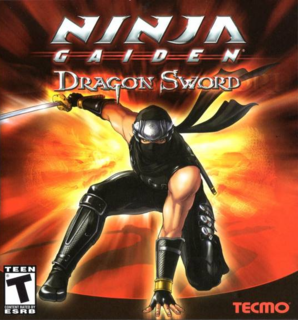NGDS is a little repetitive, but that shouldn't keep you from experiencing this beautiful, technically outstanding game.
The Bad: Gameplay can be a little repetitive and the same goes for Ryu's voice acting; 'clean' design for the characters doesn't work sometimes; auto-save.
Dragon Sword brings the series back to Nintendo's cradle where it was born after 17 years without an original adventure--the last release of the kind was Ninja Gaiden Shadow in 1991 for the first Game Boy. And it was surprising to see that not only Tecmo was ambitious enough trying to squeeze those modern 3D environments and playability saw in later X-Box releases into DS, but also that the whole thing works pretty fine.
NGDS is technically flawless: 3D models for characters and enemies are impressive for DS patterns; backgrounds are beautiful and varied; animation scenes are always awesome; voices and SFX are well recorded and produced. And the choice they made for the controls to work almost entirely through the touch screen in a 'book-like' position just gave the production more value: 3D models can be bigger, making huge bosses and great boss fights; environments look even better with this 'vertical' perspective; and they cared enough to split the stereo sound in two different ways – up/down DS speakers or left/right headphone speakers.
Controls are intuitive and work pretty well in the touch screen. Sliding the Stylus in different directions results in different strokes and slices of the katana, or in jumps/double jumps depending on the sequence of moves you're doing--combos are also possible; touching the screen quickly makes Ryu throw shurikens, kunais or arrows; holding the Stylus in a direction makes the character move to where you're pointing; rubbing the screen for a while gives you a charge to use an 'Ultimate Technique' (throwing air blades all over the room you're in); and using Ninpo magic through drawing symbols in the screen is pretty cool.
There's another interesting game mechanic that brings a little bit of strategy to the action: essences. When you kill an enemy it releases some essence (a ball of light) that keeps floating in the air until you stop moving--when you do it, it comes to you. Essences come in 3 different colors: yellow (can be spent like money), blue (fills energy bar) and red (fills ki--Ninpo--bar). And here comes the strategy: you can use Ninpo power if you see a red essence floating, since you know your ki bar will be filled again soon; or you can start to rub the screen to absorb essences around you and charge an Ultimate Technique instantly; or you can avoid using a health recharge Ninpo if you see some blue essence in the air to be absorbed.
Unfortunately this pleasant control scheme makes the game a little repetitive, since NGDS is a 'button-masher' converted in a 'screen-scratcher'--you may need some screen protector to avoid damage to your hardware. That's the major fault of the game, and I could list some other minor faults: the clean design for the characters doesn't match the game's spirit sometimes; the auto-save system can hold back your performance analysis in the end of a stage--you may want to fill your energy/ki in a save point just to explore the place, but your exploration will be saved and it will cost you some time.
The side-quest of looking for the Sea Swallows will make you coming back to the game to fill the extras list, and that rises the game's life time.
In the end Dragon Sword is an awesome game that opens the path for other installments in the series coming back to Nintendo. And Tecmo should be praised for being ambitious and competent in the execution of this great action game.

